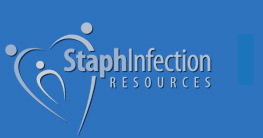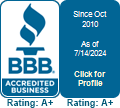A Narrow Miss with a Nasty Bug
It’s that season again. No, not the holiday season – I mean the cold, flu and nasty bug season.
Fall and winter is the time when low vitamin D levels, kids going back to school and lots of holiday travel create the perfect storm for seasonal bugs to flourish and spread. And the risk is not just limited to the common cold and flu viruses. As the number of people traveling and shopping increase, so does the risk of catching community infections like MRSA, Strep, E. coli, norovirus and other germs.
Where Germs Hang Out
 Before I tell you about my own narrow miss, here’s a few travel tips that will help you stay safe. This time of year with people on the go and traveling for the holidays, there’s some high-risk surfaces and objects you’ll want to be aware of.
Before I tell you about my own narrow miss, here’s a few travel tips that will help you stay safe. This time of year with people on the go and traveling for the holidays, there’s some high-risk surfaces and objects you’ll want to be aware of.
Here are some notorious culprits. These are typically teeming with bacteria and viruses that are just waiting to be picked up and taken home with you.
- Checkin screens and counters: Lots of dirty hands touched these before you. Try using your knuckles instead of your fingertips on touch screens. Bring your own pen instead of using counter-top pens that have been used by everyone else.
- Airplane tray tables: These don’t get sanitized as often as you’d think. Carry your own sanitizing wipes and wipe it down before you use it (see below for my favorite). Or ask for extra napkins to cover it.
- Walkway or escalator handles and restroom doors: These are “high-touch” surfaces used by many un-washed and germy hands. Try to avoid handrails when possible. Use your elbow instead of your hand to push open doors. When leaving restrooms, use a towel to touch the door handle. Use towels to turn off faucets that are not automatic.
- Rental cars: The steering wheel, heating/cooling dials and radio buttons harbor germs from the last driver. Plan ahead and bring your own antibacterial spray or wipes. Wipe down the steering wheel and dials before you drive.
- Baggage carts, security bins, chairs and tables all foster germs. For items that aren’t practical to wipe down or avoid, use a hand sanitizer after contact. Having hand sanitizer with you is simple and easy and certainly helps in situations where you can’t wash your hands.
Now that you have some ideas of how to minimize your own exposure, let me share with you my recent success.
The Exposure

While I was shopping at our local health food store for Thanksgiving dinner, I brought home a little something extra that definitely wasn’t on the menu. As I walked the isles of the store, another shopper was sneezing and coughing as they did their shopping. While I tried to keep my distance, it’s hard to avoid seasonal bugs when you’re your out and about.
This season a nasty bug has been going around town, making people sick for up to two weeks. Sure enough, the next day I felt a little tickle in my throat, which is often the first sign of an oncoming viral infection. Thankfully, I was able to avoid the brunt of this nasty bug by quickly nipping it in the bud.
When fighting seasonal bugs, 80% of the battle is won by acting quickly. The other 20% is all about planning ahead, before you get exposed.
My Recipe for Repelling Seasonal Bugs
While others around town were sick for weeks, I experienced just 3 or 4 days of fairly mild symptoms from this bug. I do several things to help boost my immunity to reduce the risks of infections. These things are so simple and effective that there’s really no excuse for anybody not to do them:
- Take a good probiotic. Of all the ways to boost your immune system, this is one of the easiest. Experts say up to 80% of your immune system is related to your gut. So taking a quality probiotic supplement to maintain healthy gut flora is important, especially before you get exposed.
- Sanitize your hands. Washing your hands is important, but it’s hard to do while traveling, running errands or visiting public places. Sanitizing is much easier and more convenient in such cases. I use a home-made essential oil sanitizer on my hands when I visit public places. Click here for details about my essential oil ecourse where I cover my favorite oils and how to use them, including my favorite hand sanitizer recipe.
- Disinfect high-risk surfaces. Before touching high-risk surfaces, there’s no substitute for a true disinfectant with a tested kill time for MRSA and common viruses. I prefer a safe, non-toxic disinfectant in a small travel-sized squirt bottle for disinfecting suspect surfaces and objects before I touch them.
- Take preventative remedies. This is one of the most important things I do. If I plan to go out in public during the winter season, I often take small amounts of preventative remedies BEFORE I go. Taking remedies ahead of time is especially helpful in higher-risk environments, such as airplanes or especially crowded places. And if I begin to have any symptoms of a seasonal “bug”, I immediately start taking a more aggressive amount of remedies. One of my favorites for sore throats and seasonal bugs is a broad-spectrum herbal remedy spray that immediately soothes sore throats and has broad-spectrum herbal activity against most seasonal sicknesses. A major plus is that it fits inside your pocket or bag and is easy to travel with.
Being prepared ahead of time is more than half the battle when it comes to staying safe from germs. I wish for you healthy and safe travels and that you have a glorious and wonder-filled holiday season!

Photo credits: crowd © Fotolia/Christian Müller, shopping cart © kzenon/iStockPhoto.com





